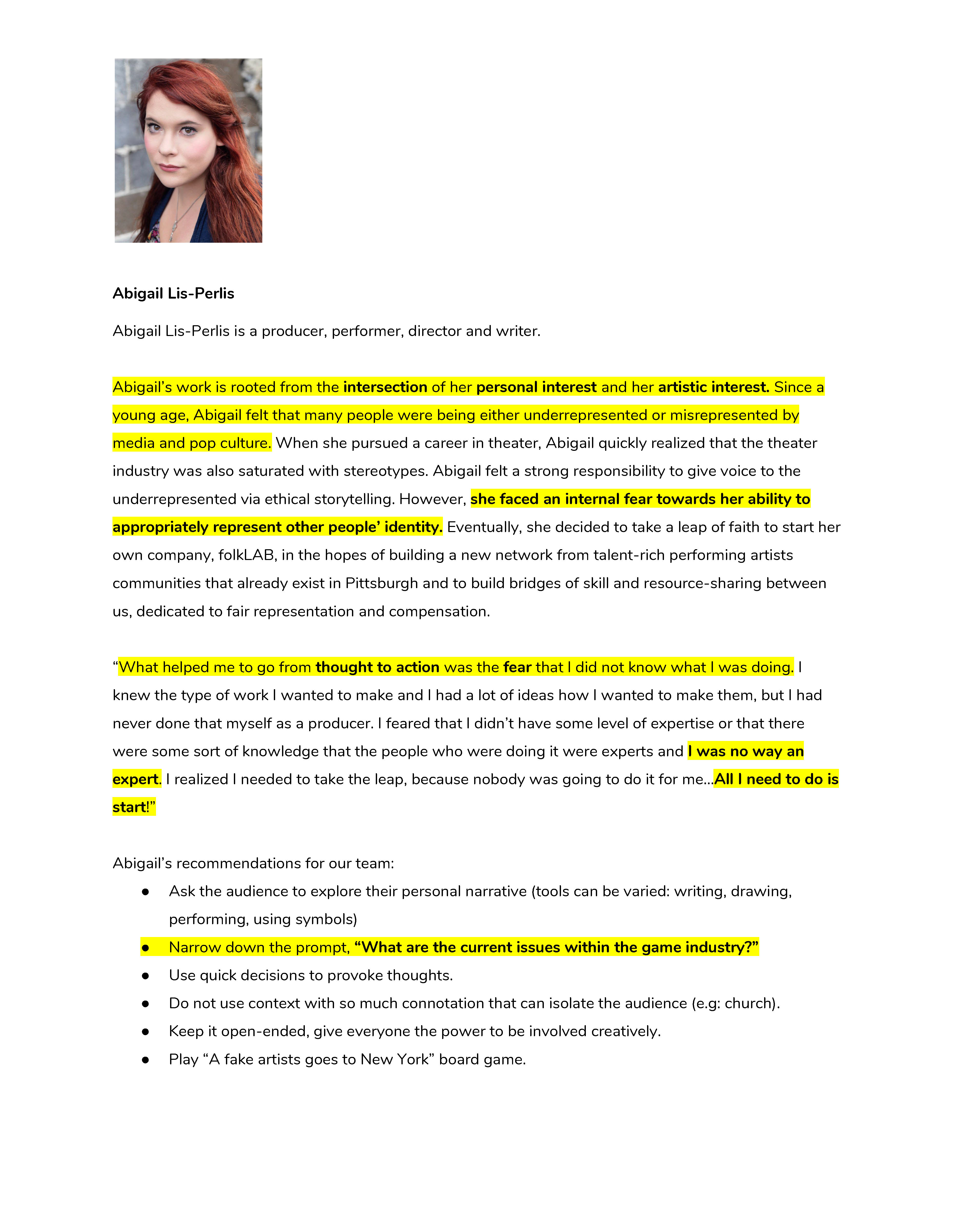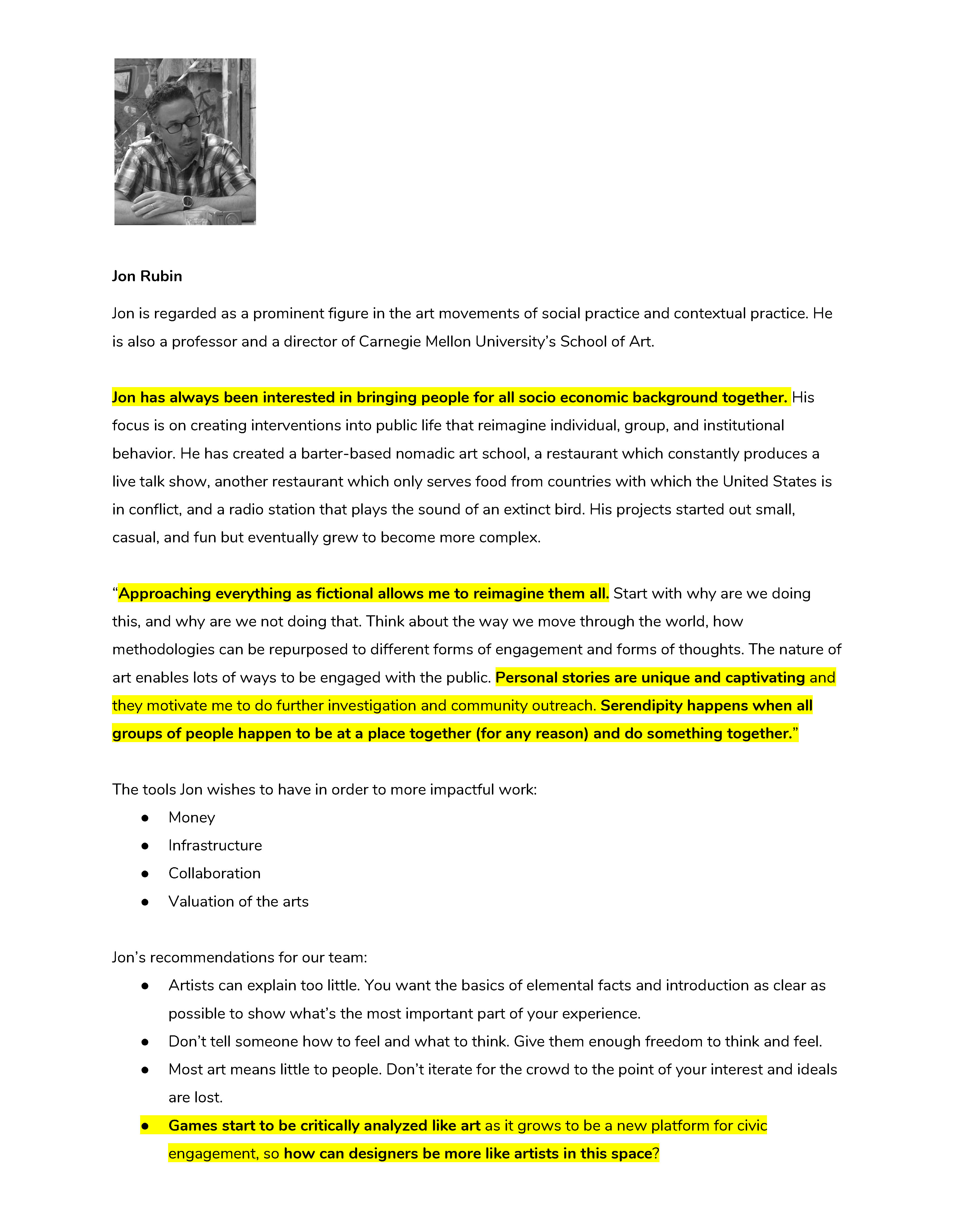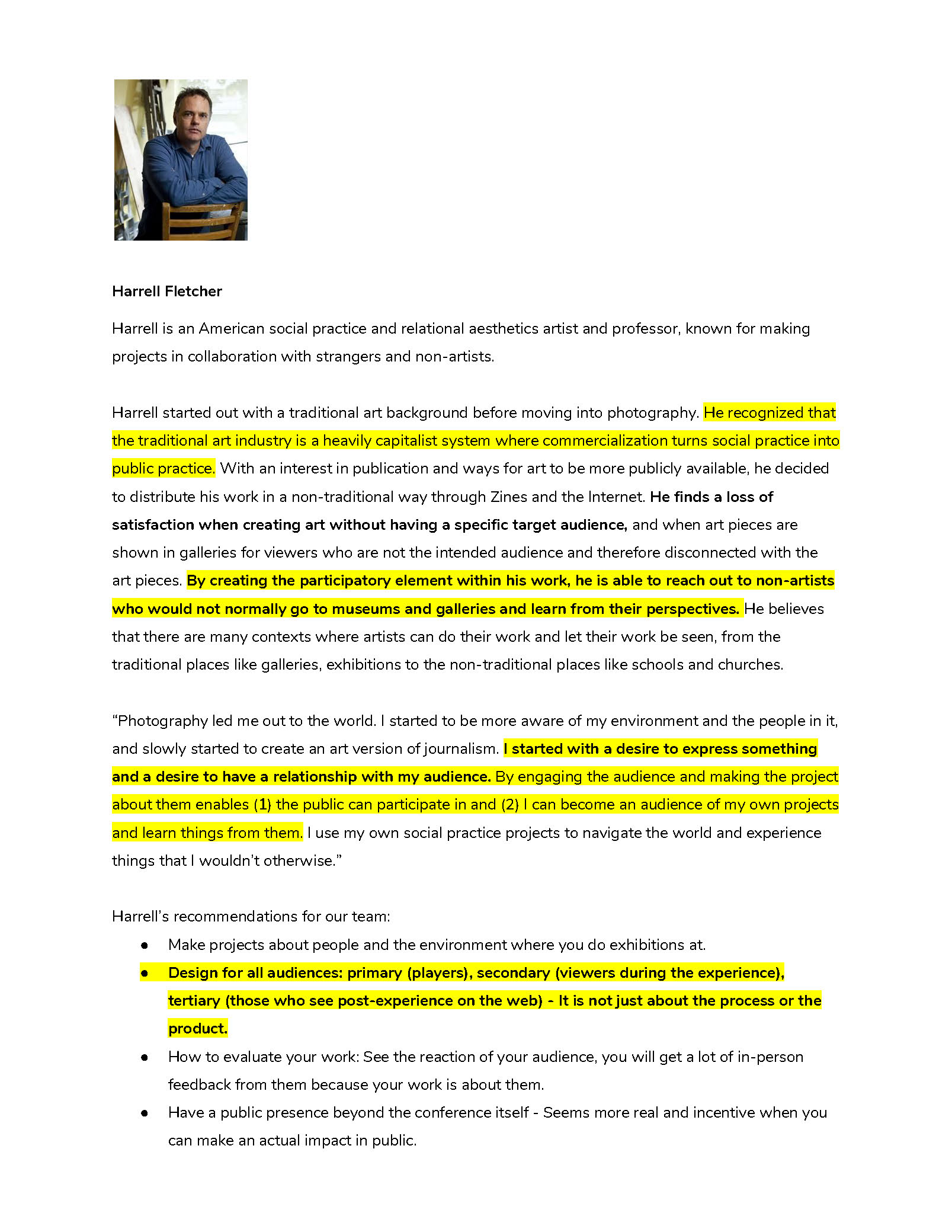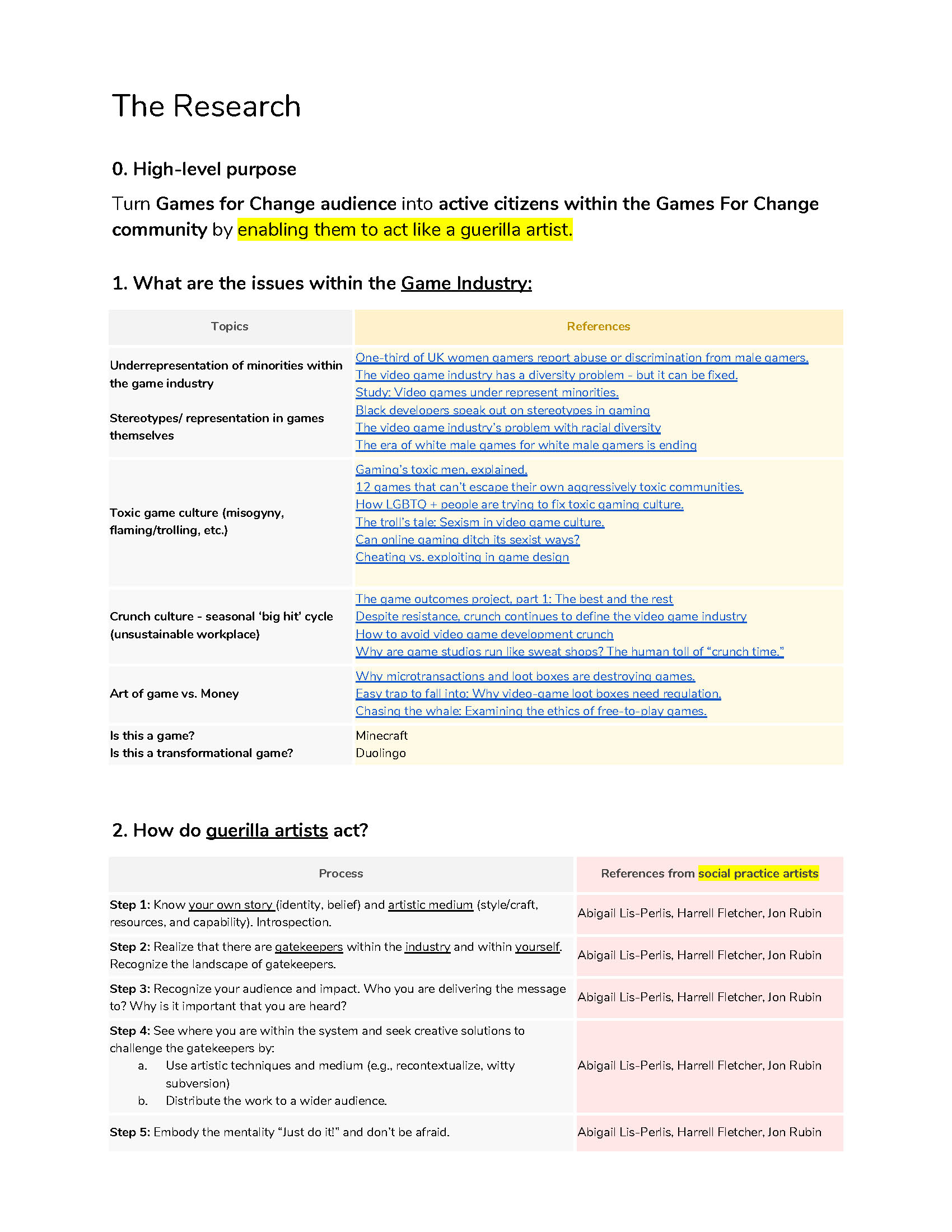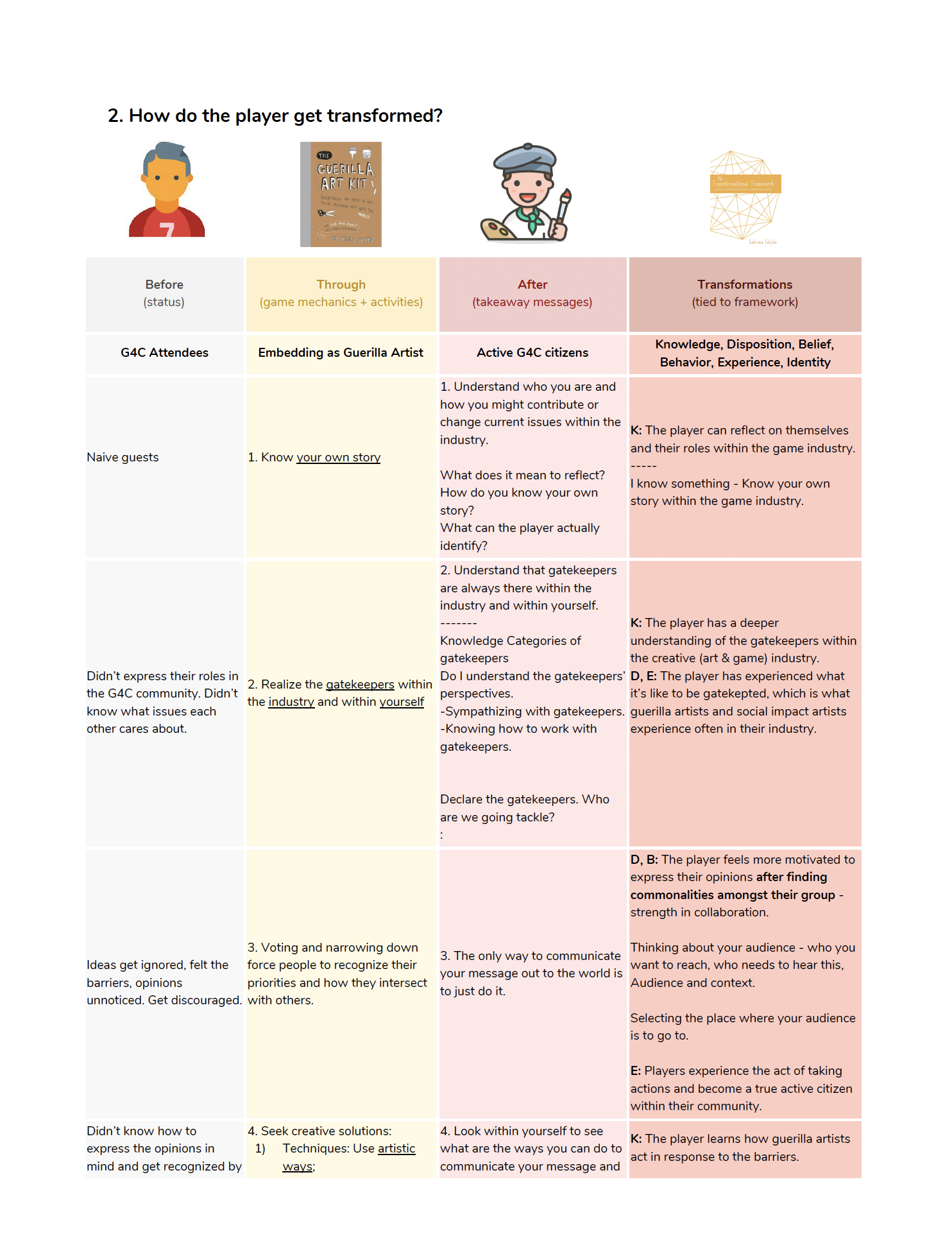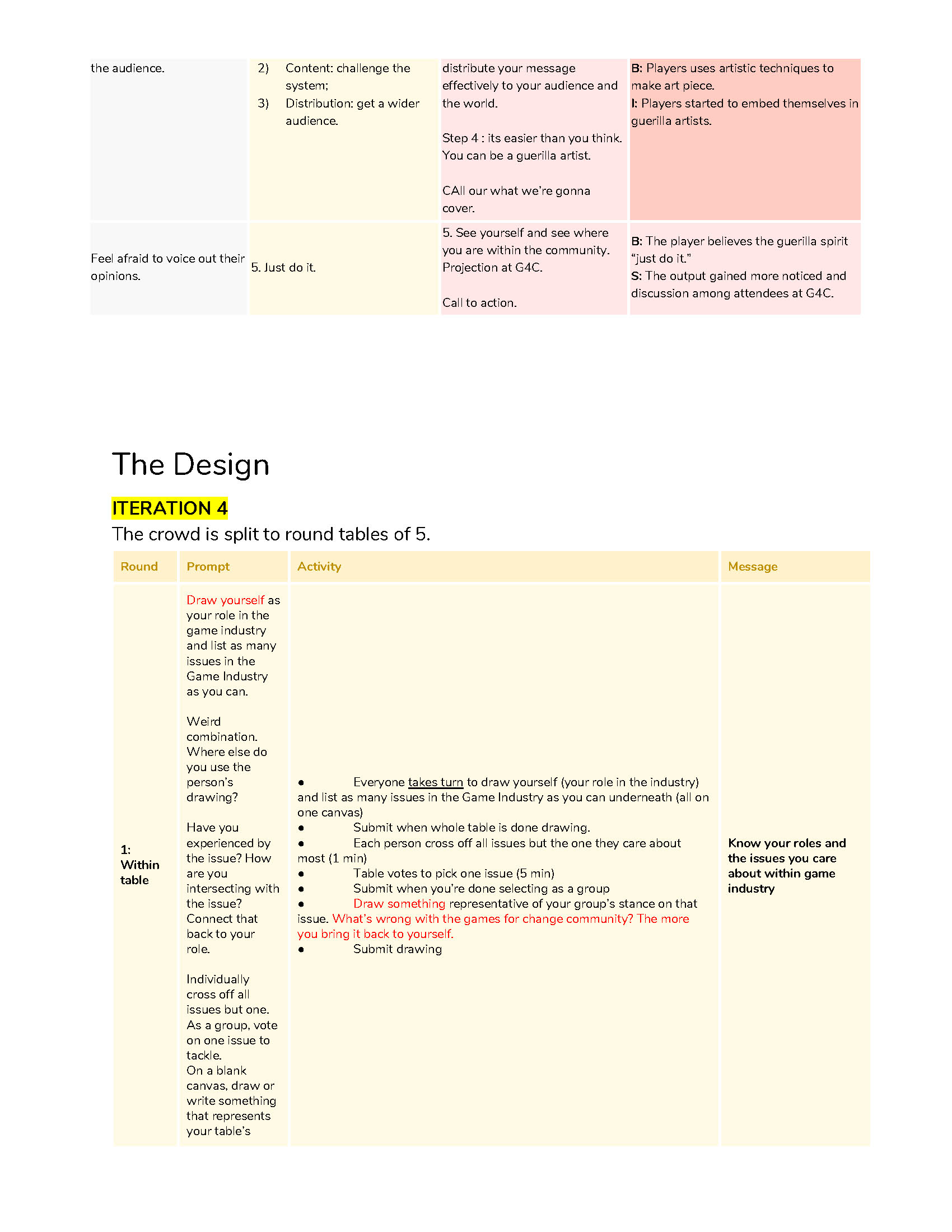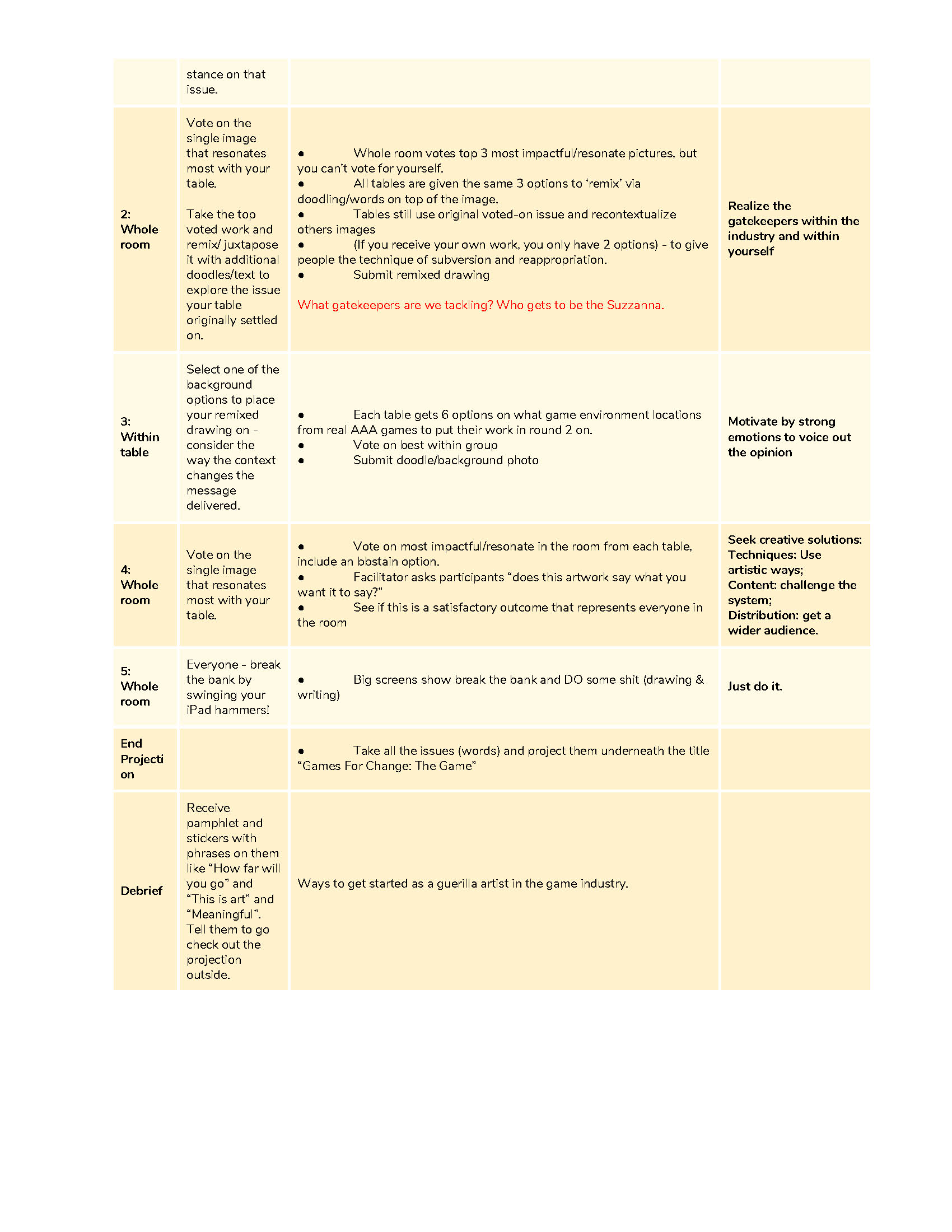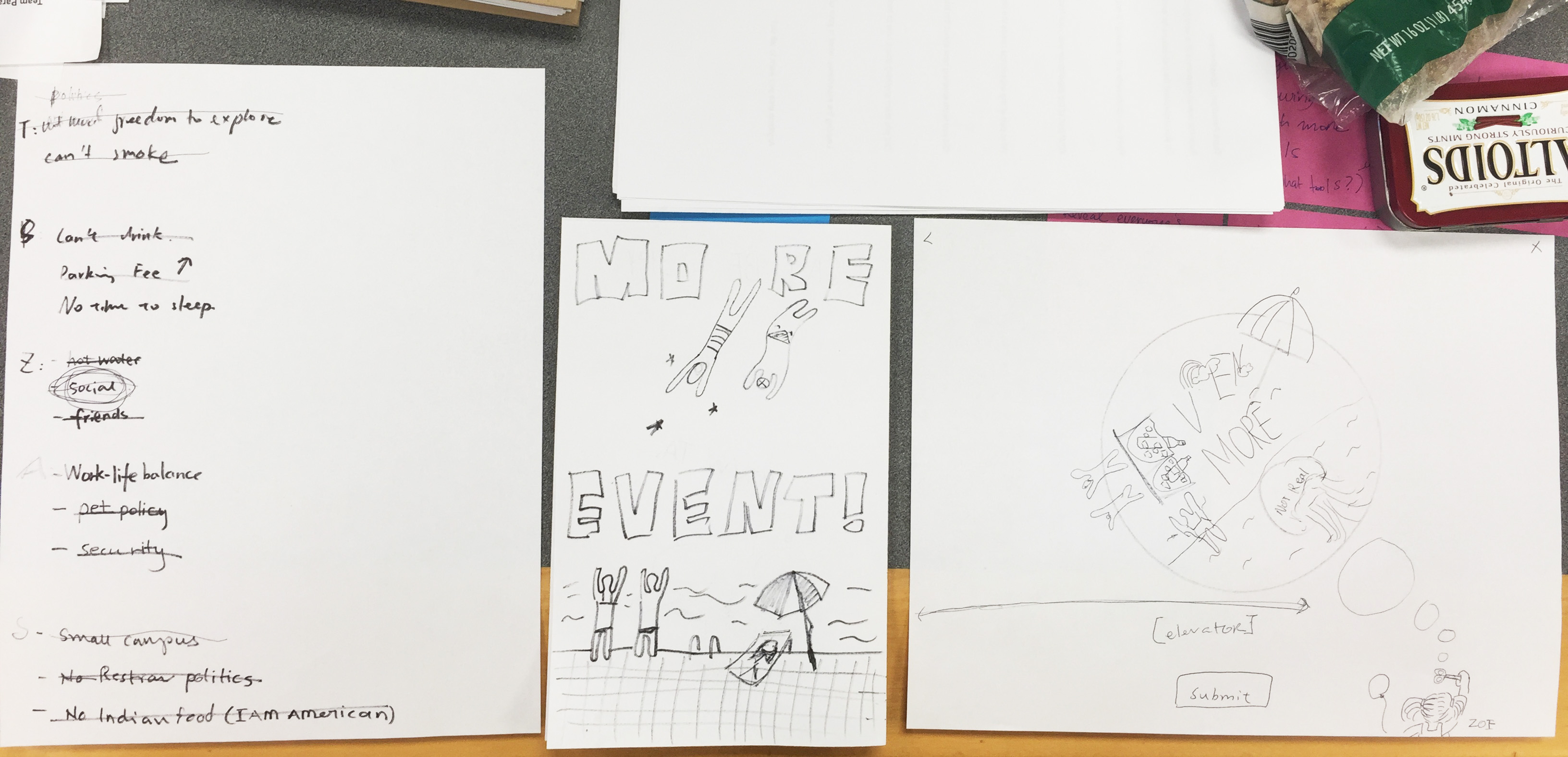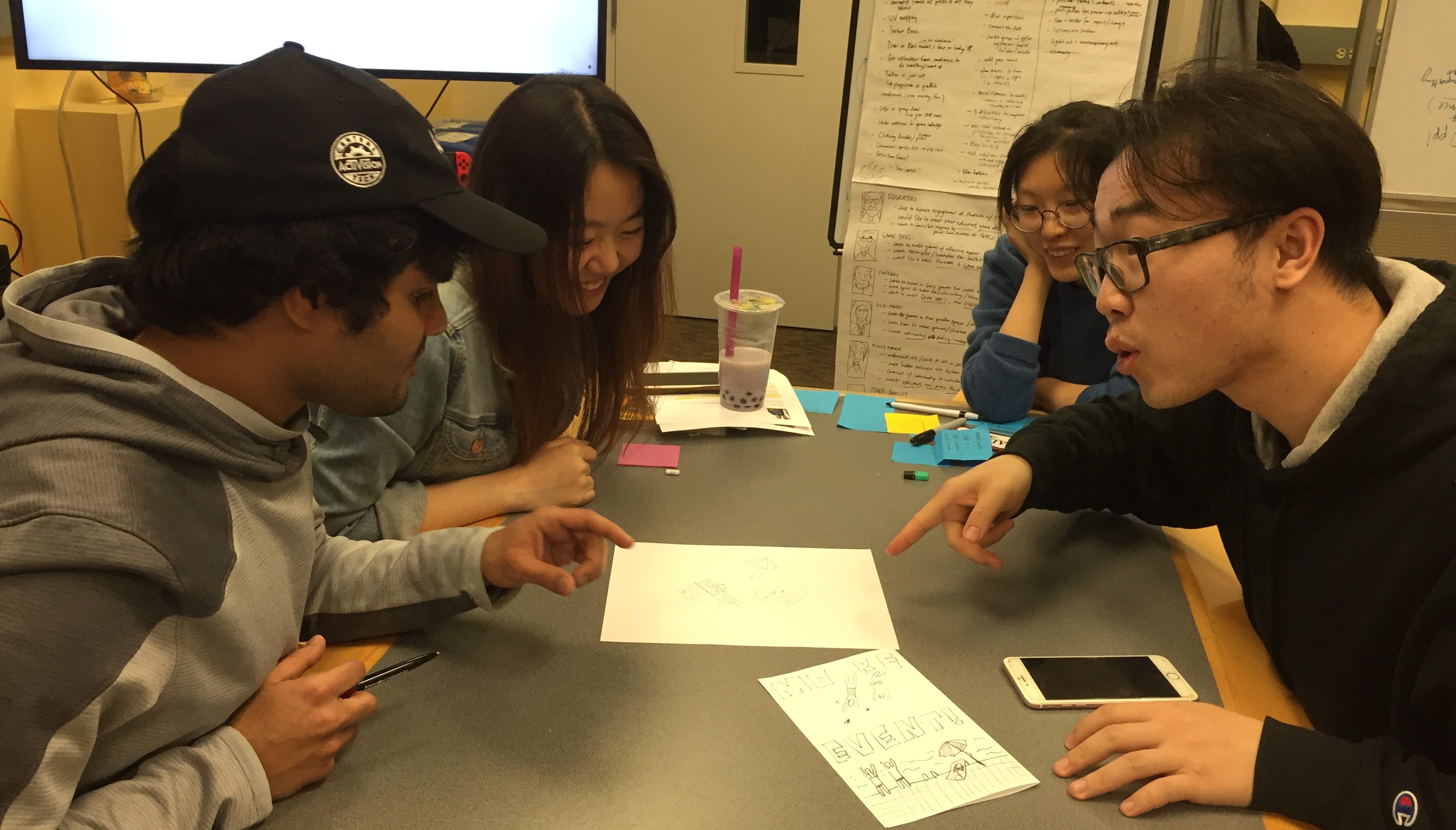Summary
| Goal: Figure out how to frame our experience. Challenge: We were blinded from our high-level purpose because we focused too much on the artist’s identity and cool interactions.We had all the right features for our experience but not the framing. Did we fulfill this week’s goals: Yes! |
Process
We met with the Culyba’s family and got our asses kicked back on track! Sabrina pointed out that our direction was unclear and we were afraid to make decisions for our domains and sub-domains (in the Transformational Framework). Yes, and…we actually faced a bigger challenge without even knowing at that point: our high-level purpose had become rote memorization rather than something with deep meaning. Hence, we had all the mechanics but not the overarching framing, so we didn’t know how to make decisions to move forward.
We went back to a list of features we wanted to keep:
- Artist’s phone calls;
- Drawing together;
- Content vs. context;
- Ending public projection;
- Team’s motivation: Puns and inside jokes.
We then arrived at another iteration with a new artist’s identity “Piggy Banksy” with a call-to-action “Just do it!” We needed a representation of a fictional artist because of feature (1) and (5).
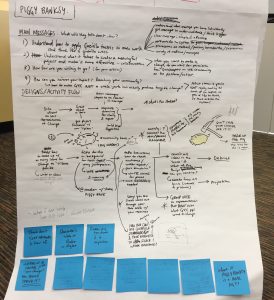
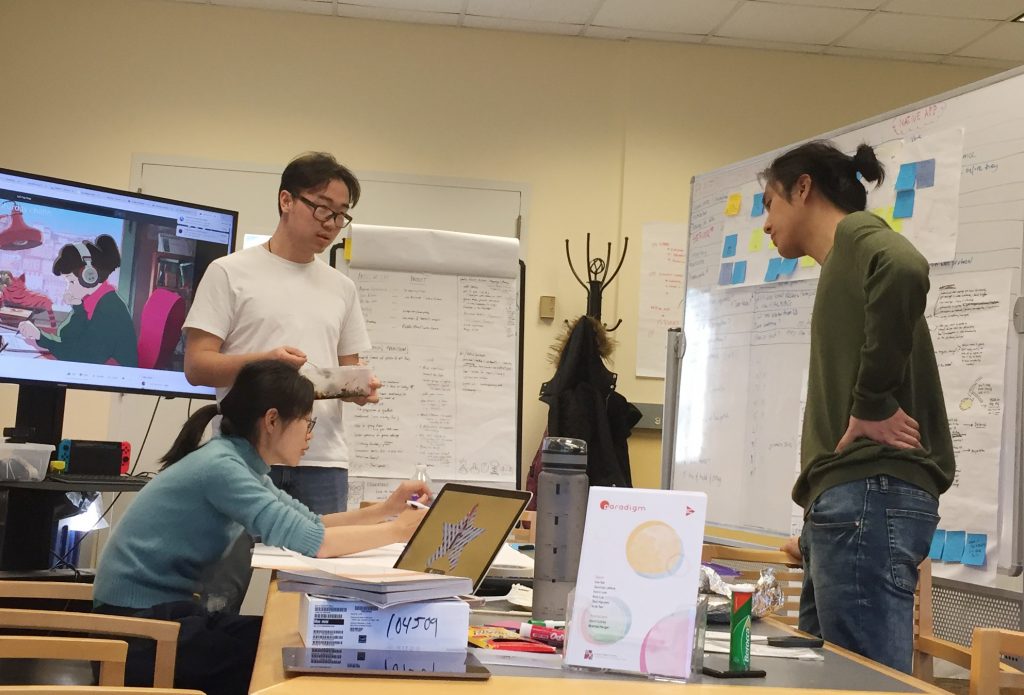
Our inspirations for this artist came from Jon Rubin, Banksy, the Guerrilla Girls, and Casey Neistat. We also liked the association of “change” as money and as impact. This concept got the team excited, but we knew our framing was still not convincing.
Taking a step back
Kevin explained this new direction to Dave, which got stopped abruptly at “inspire our audience to think like guerrilla artists.” He asked, “What does it mean to think like guerrilla artist? Show me research references!”
We got frustrated with Dave because we designed our mechanics based on solid research the past 10 weeks. We had the answers, so why ask this question?
Eventually, it started to dawn on me that the problem to our framing was our inability to articulate and display the answers in a structural format. I also realized that we got stuck at figuring out a fictional artist’s perspective and cool interactivity rather than understanding how real artists arrive at their ideas.
Luckily, Forfreedoms connected us to several social practice artists who could do interviews that evening. I recorded and transcribed the interviews to create the artist’s profiles for our references. Although these are not guerrilla artists, they brought clarity to the “civic engagement” aspect of our project, which is about making the audience a crucial part of our experience at the Festival. We learned that our high-level purpose “to turn G4C attendees into active G4C citizens” was all about personalization. We asked ourselves these questions:
- How to make the experience about the audience?
- How to teach the audience technique of guerrilla artists and/or social practice artists?
There is a difference between guerrilla artists and social practice artists that required some clarity from us.
The designers and I all worked together on the document for Dave and flushed out our new experience by mapping step-by-step the artists’ process to our design activities. Things started to make sense…
Mini-round Activities:
R1 [Introspection] Guests raise personal issues they have within the Games For Change community.
R2 [Introspection within table setting] Guests discuss with teammates to arrive at an issue they want to tackle today. These issues will be shown on the big screens.
R3 [Audience & Context] Guests create a slogan and poster about these issues to showcase to other guests in the theater.
R4 [Audience & Context] Guests select background images of locations within the Parsons building to display their issues.
R5 [Connection to reality]
- Take-away gift – Guests create a sticker about the issue to put on their name badge, or create a new name badge, or we print out the posters for them.
- Ending projection – Guests see their issues outside the theater (or in the lounge) as they leave the experience.
Personalized playtests
We playtested internally with paper, using the prompts “Things that bother you about the ETC” (hahaha…It’s all about personalization!)
Our next step was to playtest with a 20-30 people on Playtest Day at the ETC. We decided to go with paper prototype for this playtest to validate our design before worrying about usability. Since we wanted the experience to be personalized for the playtesters, we changed our prompts to be “Things that bother you about Pittsburgh.”
Playtest Day April 06, 2019 [Link to videos]

Kevin facilitated the experience while the rest of us were divided to observe. We also handed printed-out surveys to the guests at the end. The playtest went a lot better than we expected (considering we only had less than a day to put it together).
What went well:
- Guests come in at different times so be ready to bring them to their tables.
- Have ice-breaker opportunities, such as “Please introduce yourself to each other if you haven’t already;” “Talk about your recent favorite game;” “What was your favorite talk at the Festival so far?”
- People love sharing their personal experiences, so we should work on our prompts to encourage sharing.
- Use indirect control: Have references on the table about the issues, or what it means to be a guerrilla artist to give guests permission on what’s safe to talk about.
- Guests commented that they learned great things about each other.
- Guests enjoyed and felt pride in revealing their collaborative poster and message.
- Saying “quality of the drawing does not matter” helped ease guests who aren’t comfortable with drawing.
Room for improvement:
- Drawing mechanics. 50% of the guests did not feel comfortable drawing but was okay with it because someone else at the table would be able to draw.
- One person often took charge of drawing while the rest focused on discussing. We needed to evaluate how important it is for our experience to have everyone draw or write. If time permits, we thought of providing a more robust tool kit on the iPad for our guests to go out-of-the-box and deliver their message, like a true guerrilla artist.
- Our experience felt more like a collaborative workshop than badass guerrilla artist workshop. Hmmm!
Regardless, we learned great things about our design and what it means to create a live experience.
